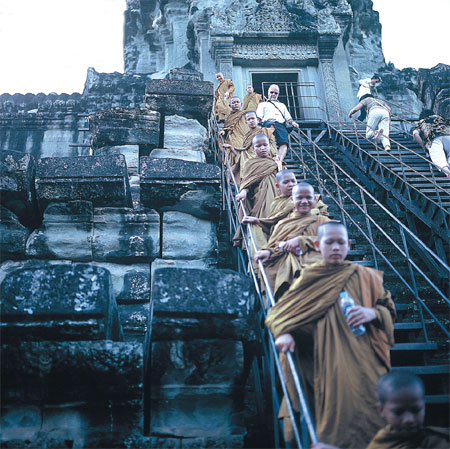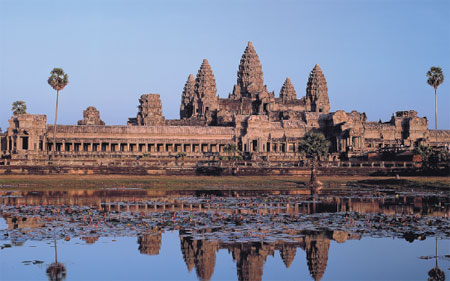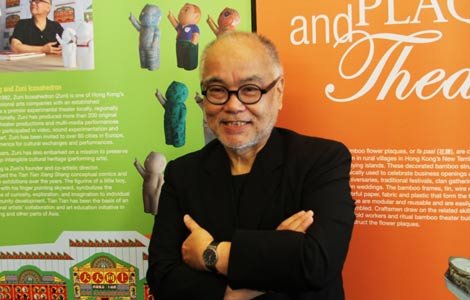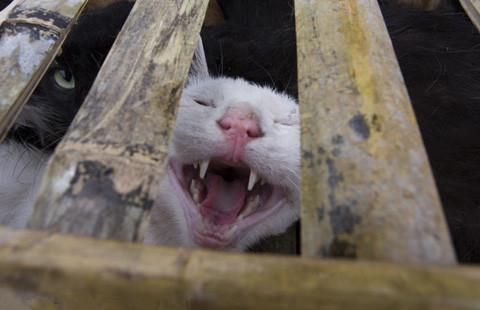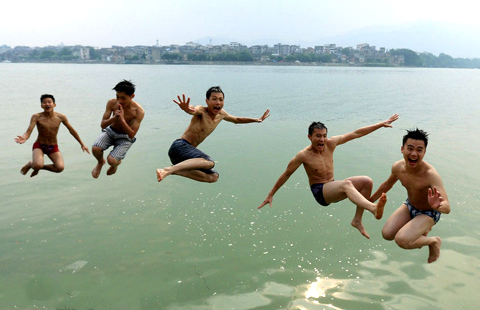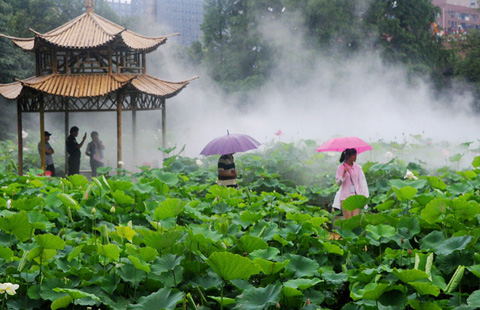Ancient Angkor
Updated: 2014-07-11 07:01
By Bidisha Bagchi (China Daily USA)
|
||||||||
Big crowds at the temple can't diminish the wonder of Cambodia's most famous ruins, Bidisha Bagchi discovers.
Angkor Wat in Siem Reap, Cambodia is expected to see about 4 million visitors this year, according to one tourism survey. We were glad to be a part of the horde experiencing the grandeur of the majestic UNESCO World Heritage site, which some acclaim as "poetries in stone".
We left our hotel by 5 am to see the temple of Angkor Wat with the rising sun. Despite the early hour, we weren't the only visitors.
There were hundreds of people, all equipped with high-tech cameras, some with tripods, occupying the most accessible positions to get the best view and impatiently waiting for the sunrise.
The temple blossomed in the dawn, looking radiant and magnificent as we watched the play of the sun's early rays.
Angkor Wat was built by the Hindu king Suryavarman II, who dedicated it to Lord Vishnu, the supreme god of Hinduism. The original idol of the deity from the 12th century still stands intact inside the complex, beautiful and well-protected from the rain and sun. Many original statues still remain inside the temple towers and galleries.
Angkor was the king's capital and also the classical example of the gorgeous Khmer (Hindu-Buddhist empire of Cambodia) architecture.
The galleries are more than 1.5 kilometers long with thousands of beautiful and intricate carvings of the Hindu epic Ramayana. This wall is also the longest continuous sculpture in the world.
The carvings of the Apsaras (celestial dancers) and their jewelry adornments and head gears are so intricate and lively that it was difficult to believe that no modern equipment was used to carve them. The entire temple is built of a special kind of sandstone that is typical of Cambodia.
Only one out of the five towers was open to visitors. We had a tough challenge climbing up a steep flight of restored stairs. Climbing wasn't easy but worthwhile. The bird's-eye view of the Angkor Wat complex was breathtaking.
There's a strict dress code for going into the tower: No sleeveless tops or shorts. In most Hindu temples (as Angkor Wat was, originally) even shoes aren't allowed. But here, because of the climbing involved, everyone is allowed to wear a pair of shoes - even flip-flops.
At times there were so many tourists jammed together that it was impossible to get a nice shot and avoid getting into other peoples' photos. Surprisingly, even at 6 am, local children were up, selling trinkets, mementos, scarves and bags - all priced in US dollars, like everything in Siem Reap.
Angkor Archaeological Park includes the Angkor Wat temple and the Angkor Thom complex, which features the Bayon Temple and other ruins.
When we arrived at the south gate of Angkor Thom, the road was chock-a-block with cars, bikes, tour buses and hundreds of people who were walking to the complex.
Angkor Thom was the last capital of the Khmer king, Jayavarmana VII. The road to the gate is flanked by numerous statues of gods and demons. This was a kind of a citadel, where all political gatherings, religious festivals and other activities relating to the higher-ups of the society and the kingdom were held. It wasn't a place for the commoners.
The entire complex is full of majestic temples, terraces and carvings that brought out the essence of an ancient civilization.
The star attraction was certainly the Bayon Temple, especially the huge faces of Buddha on top of the temple - 54 in total, each representing a province of Cambodia during that century. The faces were in ruins despite periodic restorations.
After the death of the last Buddhist king, Jayavarmana VII, the faces had been altered by other kings according to their religious preferences.
The temple was in a dilapidated state but the carvings were elaborate, mainly about the king's day-to-day life and trading practices. It was also here that we found the carved narrative of how the stones were brought in for building the site.
A dirt road leading to the main temple of Ta Prohm is flanked by giant trees, some of which are hundreds of years old. It looked to be a sort of botanical garden as every tree was labeled with its botanical names, origin and age.
A group of local musicians sat under a tree and played Khmer music for visitors, making the ambience very peaceful.
Sadly, even the marvelous carvings of the Apsaras had huge cracks. It was as if Ta Prohm was struggling to survive the ravages of time, nature and human contact. But it was a sort of romantic affair between the ruins and the surrounding forest that has gradually engulfed the entire premises.
Contact the writer at features@chinadaily.com.cn
IF YOU GO
China Eastern Airlines has direct flights to Siem Reap. Taxis are available for a ride to the hotel. Trips to Angkor Wat and other temples can also be done in taxis or in a Tuk-Tuk. Tickets to the Angkor Wat temple complex cost $20 and are valid for the day. If you take a guide, make sure he is approved by the tourism board.
|
Pilgrims and tourists take the steep flight of stairs to one of the towers in Angkor Wat, the biggest tourist attraction in Cambodia. Photos provided to China Daily |
|
Angkor Wat is a vast temple complex built in the 12th century in Siem Reap, Cambodia. |
(China Daily USA 07/11/2014 page14)

 M.Y. China: Tradition with a twist
M.Y. China: Tradition with a twist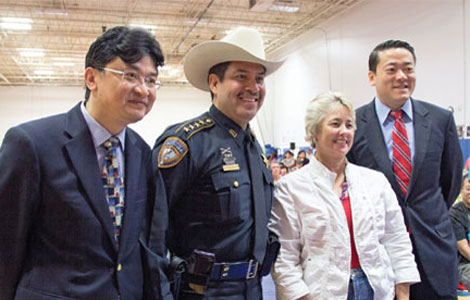
 CARE marks 4th of July with charity fundraiser
CARE marks 4th of July with charity fundraiser
 Hainan Airlines provides limo service in US
Hainan Airlines provides limo service in US
 Chinese-American hoopster makes history
Chinese-American hoopster makes history
 Hit play returns to US for a second run
Hit play returns to US for a second run
 The Village by Stan Lai comes to stages in the US
The Village by Stan Lai comes to stages in the US
 APEC China CEO Forum opens in Seattle
APEC China CEO Forum opens in Seattle
 Chinese Navy leave Pearl Harbor to join RIMPAC drill
Chinese Navy leave Pearl Harbor to join RIMPAC drill
Most Viewed
Editor's Picks

|

|

|

|

|
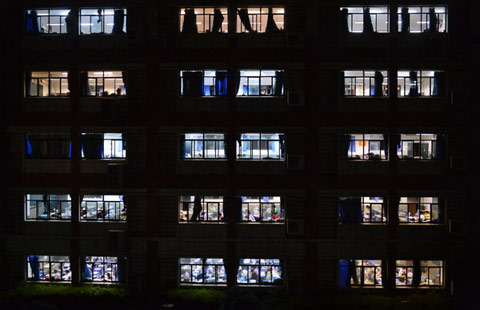
|
Today's Top News
China, US pledge partnership
RMB use is on the rise in US business
Chinese see NYC real estate as a sound place
Australia is top destination for wealthy Chinese
Berlin expels US spy official
China-US investment treaty on fast track
Horses and dragons kick off art show
Chinese are No 1 buyers of US residential property
US Weekly

|

|
